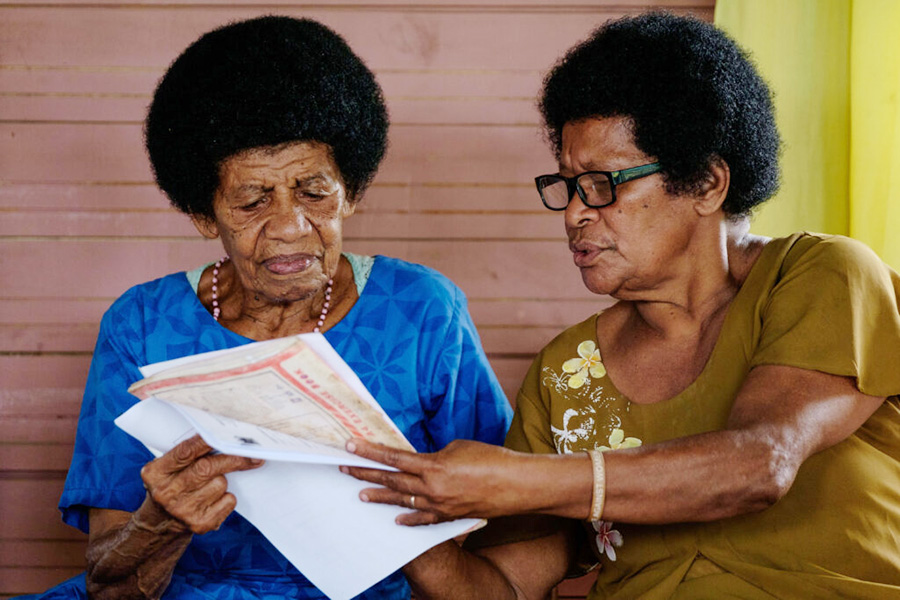Gender Research and Data – What is lacking and how we can improve this?
November 27, 2021

The recently launched Women’s Fund Fiji Strategic Plan 2022 – 2024 titled “An Ocean of Opportunities, Change and Resilience” captures the vision, mission and strategic focus of the Fund as it embarks on a new exciting journey as the first independent locally-led national women’s fund in the Pacific.
The title reflects the spirit of the Fund as it recognises the enormous opportunities present to secure funding to ensure diverse women, girls and gender non-conforming people in Fiji have a feminist future. This includes a future where they have the freedom to make choices about their own lives and well being, when they can use their voices to influence decision making in local spaces and are recognised by their community as change agents.
The ‘How’ is outlined in the Plan and positions the approach of the Fund in response to a number of concerns including the lack of representative voices and narratives of diverse women, girls and gender non-conforming people in decision-making spaces about funding and resource allocation:
For the purposes of this blog which seeks to highlight the importance of gender research and data, I am choosing to zone in on this concern as an entry point to the discussion, even though one could quite easily build a case for the importance of gender research and data around all the other areas of concern outlined in the Strategic Plan.
Those working to advance the gender equality and women’s human rights agenda highlight the importance of gender research and data to inform Policy Making, Accountability, Analysis/Academic Research and for Advocacy purposes. In this instance, gender research and data are required to equip the Fund with the detailed information it needs to support their advocacy for funding and resource allocation towards women’s rights and feminist work.
The Fund recognises that decisions on funding and resource allocation are often made based on the limited knowledge and preferences of funders, investors, power holders and resource owners. Opportunities for diverse women, girls and gender non-conforming people’s narratives and voices to be heard are still limited and they continue to be challenged by the lack of transparency on what and how much donors fund, and how funding decisions are made.
A scoping study commissioned by the Australian Government’s Department of Foreign Affairs and Trade to inform the establishment of Women’s Fund Fiji in 2015 identified a gender data gap in relation to donor funding of Pacific Women’s Organisations with no data available on the total funding for gender equality and women’s empowerment activities in a readily accessible format. This presents a major challenge for the advocacy work of the Fund as they seek to direct resources to women’s rights and feminist work.
Questions that remain unanswered and that need to be researched include the scale and modalities of bilateral, multilateral, corporate and philanthropic grants disbursed in the name of gender equality and women’s empowerment and how much of those resources impact the lives of diverse women, girls and gender non-conforming people.
My work as a so called ‘gender specialist’ over the last decade has seen me work with a range of development partners in most countries of the Pacific, in the name of advancing the gender equality and women’s empowerment agenda through country specific activities. However, at this point of the journey, I can’t help but reflect on how much of an impact these activities have had on women’s lived realities and how much has been sustained over time.
As a means of launching myself into the world of gender research and to start to look critically at my work through a feminist and queer theory lens I embarked on the pursuit of further online studies last month and am discovering some interesting perspectives.
One of the perspectives which reinforces the need for gender research, particularly in the Pacific is a discussion by (Zalewski, 2010) on the connections between gender, gender mainstreaming and feminist theory. Zalewski notes that gender mainstreaming has become extremely popular but there has been less attention to the concept of gender, the inadequacies of gender mainstreaming and feminist theory. She quotes a claim of ‘critical incomprehension around feminism’ within the broader field of International Relations and gender mainstreaming. Zalewski poses provocative questions around how much work does gender really do? How does gender do its work and how far has feminist theory been able to shed light on these questions and operationalise desired outcomes?[1]
All speak to the need for further gender research and data to better understand the interconnectedness of these approaches. While there is recognition that very little of the donor resources goes to addressing gender equality as a priority – the other question is how much of what is allocated to the priority of gender equality reaches women on the ground.
[1] Zalewski, M. (2010) ‘“I don’t even know what gender is”: a discussion of the connections between gender, gender mainstreaming and feminist theory’, Review of International Studies, 36(1), pp. 3–27. doi:10.1017/S0260210509990489.
Recent blog
A journey to self-care: My retreat experience in Bodrum, Turkey
October 15 2024
Crafting Canoes of Change in Fiji
July 21 2022
Reflections of a Pacific Feminist
November 29 2021

Leave a Reply